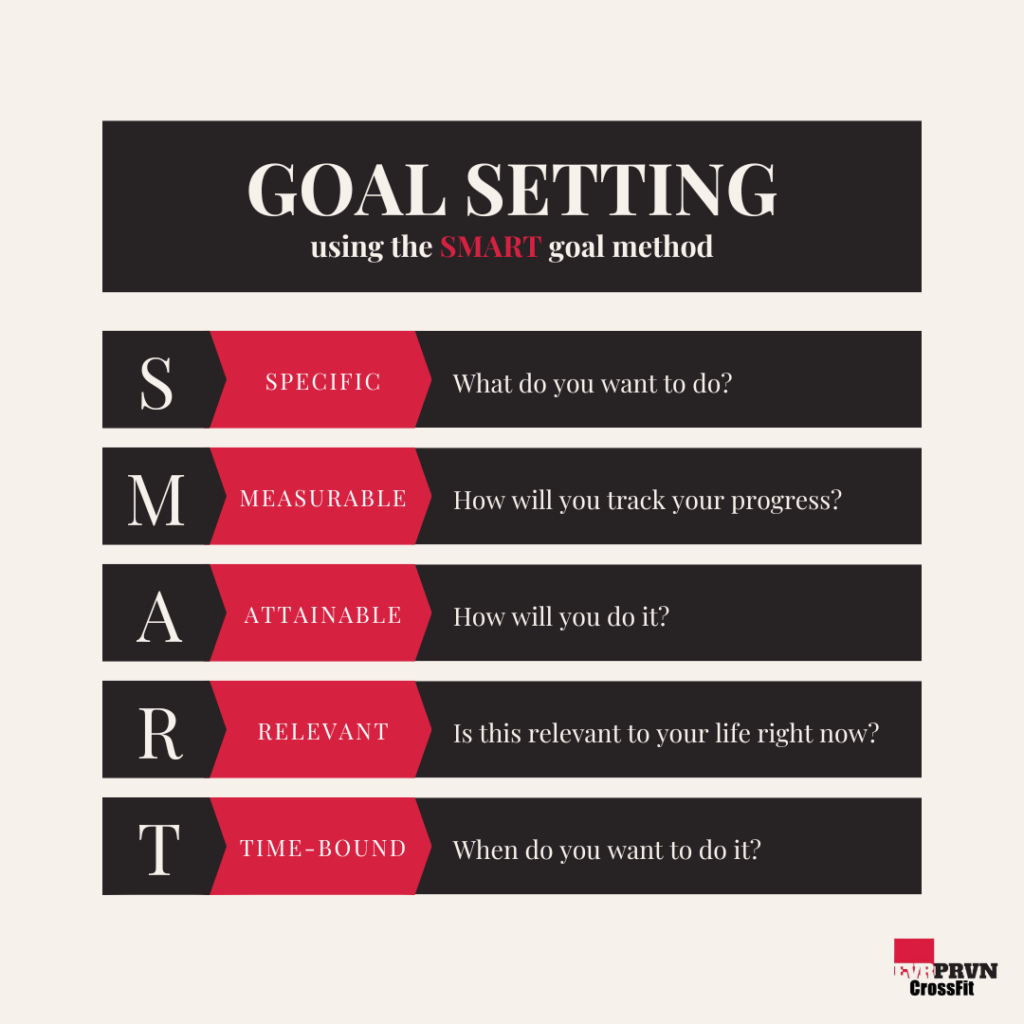Making any lifestyle change can be challenging at first. If you aren’t sure where to start, many people find that starting with setting a goal can be helpful in giving them something to work towards, and motivates them to stay on track.
Setting goals can actually be quite difficult, and most people don’t know where to start. Most of the time, we set goals that are too broad for us such as, “I want to workout more,” or “I want to eat healthier.” But how do we track our progress in reaching these goals? How do we know when we have achieved that goal? One of the most helpful ways in structuring your goals is by making them SMART:
Specific
Measurable
Attainable
Relevant
Time-bound
Specific
A specific goal is a goal that has depth to it. Instead of saying something like “I want to workout more,” try setting a smaller goal such as “I want to workout 3 times per week.” Specificity is important so that you know exactly what you need to do in order to reach your goals.
Measurable
A measurable goal is one that is based on some sort of metric. It is something that you can easily track. For example, instead of saying, “I want to get better at squatting,” try rewording your goal to be something like: “I want to be able to do 10 consecutive squats.”
Attainable
An attainable goal is one that you know you will be able to accomplish. People have a tendency to get a little carried away with their goals when they are first starting out. However, setting a goal you realistically know you might not be able to accomplish at first doesn’t make sense for anyone. It is more important to be realistic with your goals. For example, if your big goal is to compete in a CrossFit competition, a smaller, more attainable goal for yourself could be to take a specific number of CrossFit classes per week. As you attain certain smaller goals, you will be able to set new goals that will help you reach your overarching goal.
Relevant
Relevant goals are ones that help you make progress. If you are trying to become a CrossFit athlete no matter what it takes, it doesn’t make sense to also be training for a half marathon at the same time. Sure, it may be another goal you want to accomplish, but it isn’t helping you reach your goal of becoming a CrossFit athlete. You should prioritize actions that are going to help you reach your overall goal.
Time-Bound
Setting goals that are limited by a time constraint is important so that you are able to keep yourself accountable. With goals, you may have goals you want to accomplish daily, monthly, or yearly. Being specific with the dates you choose and making sure you would also be able to complete that goal without pushing yourself too hard is important. For example, completing 3 CrossFit classes a week for a month would be an example of a time-bound goal.
Here is an example of a complete SMART goal:
I want to compete in a CrossFit competition by the end of the year. To make this happen, I will participate in a one hour long Crossfit class three times a week for the next 3 months.
After those three months, you can then reassess your goals, and make tweaks depending on your progress to help you reach your larger goal. By utilizing the SMART method when creating your goals, you will be able to create realistic goals for yourself that will be easy to stick to, and help you succeed in accomplishing any of your big goals you want to set for yourself.
Need help coming up with goals? Reach out to a coach today for a goal setting session!

